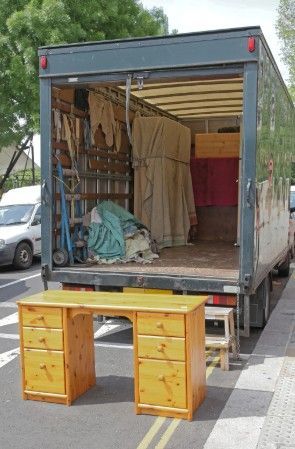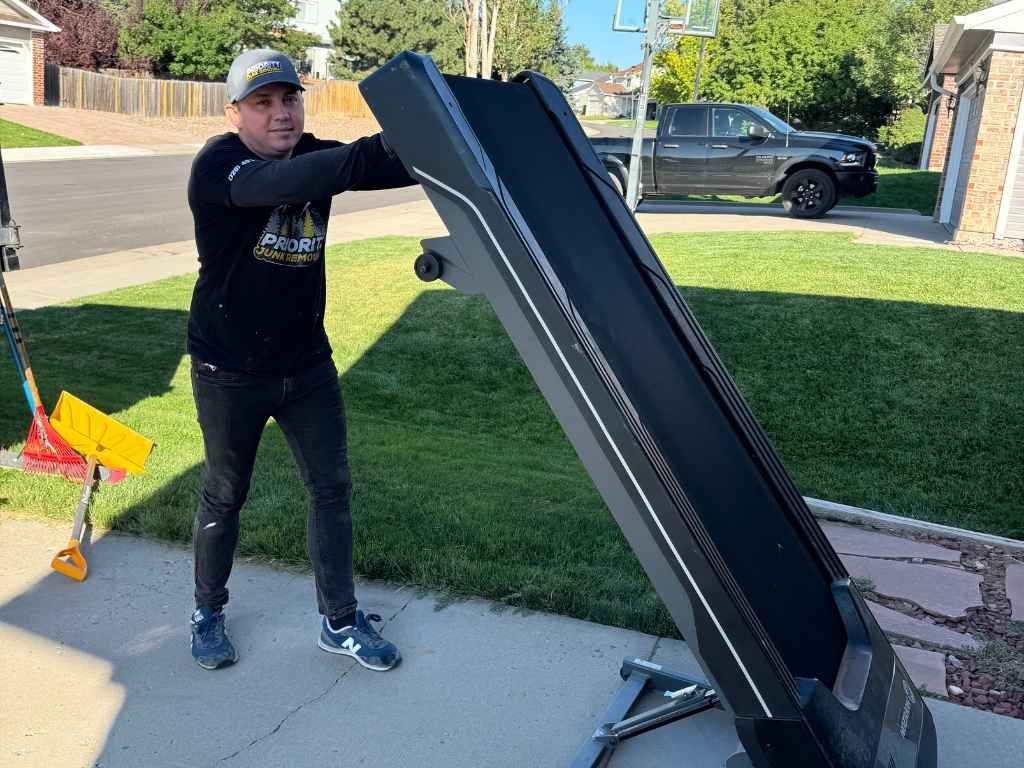How to Dispose of Old Electronics Safely
In today's fast-paced digital world, it's easy to accumulate outdated electronics. From old phones and laptops to televisions and printers, our homes can quickly become cluttered with obsolete gadgets. But when it's time to upgrade, what happens to the old stuff? Tossing them in the trash might seem like the easiest option, but improper disposal of electronics can lead to serious environmental and health issues. Electronic waste, or e-waste, contains hazardous materials like lead, mercury, and cadmium, which can leach into the soil and water supply if not handled correctly.
Why You Can’t Just Throw Electronics in the Trash
Dumping old electronics in the trash may seem harmless, but it’s actually illegal in many places. Electronics are classified as hazardous waste because they contain heavy metals and toxic chemicals. When these materials end up in landfills, they can seep into the ground and contaminate water sources, posing a threat to both wildlife and human health. Plus, improperly discarded electronics contribute to the growing global e-waste problem.
According to the Global E-waste Monitor, over 50 million metric tons of e-waste are generated each year, and less than 20% of it is properly recycled. That means millions of tons of toxic materials are left to rot in landfills or get burned, releasing harmful chemicals into the atmosphere. Beyond environmental impact, there’s also the security risk. Old electronics, especially computers and smartphones, may contain personal data that can be recovered even after deletion.
How to Wipe Data Before Disposal

Before you dispose of any electronic device, it’s crucial to remove all personal data. Even if you think the device is broken beyond repair, data recovery techniques can extract information from hard drives and memory chips.
- Back Up Important Files: Transfer photos, documents, and any essential data to an external drive or cloud storage.
- Factory Reset: Most smartphones, laptops, and tablets have an option to restore the device to factory settings, which deletes user data and installed apps.
- Remove External Storage: Take out memory cards and SIM cards—they can hold data even after a reset.
- Use Data Wiping Software: For extra security, use a data shredding program to overwrite storage multiple times, making it nearly impossible to recover files.
- Destroy Hard Drives Physically: If you’re particularly concerned about security, physically destroying the hard drive with a hammer or drill ensures no data can be retrieved.
Environmental Impact of E-Waste
Electronics are made with a complex mix of metals, plastics, and chemicals. Improper disposal of these materials contributes to pollution, soil degradation, and water contamination.
- Lead: Can damage the nervous system and cause cognitive issues, especially in children.
- Mercury: Highly toxic, it can accumulate in the food chain and harm marine life.
- Cadmium: A known carcinogen that can cause lung and kidney damage.
- Brominated Flame Retardants: These chemicals can disrupt hormones and impact human development.
When e-waste is incinerated, these toxins are released into the air, creating smog and contributing to respiratory problems. Proper recycling helps recover valuable materials while preventing environmental damage.
Why Responsible Disposal Matters
Disposing of electronics responsibly isn’t just about protecting the planet—it’s about creating a more sustainable future. Recycling and reusing materials reduces the need for mining and manufacturing, conserving natural resources and cutting down on emissions.
Many components in electronics, such as rare earth metals, are limited resources.
Recovering and reusing them through recycling programs reduces dependency on environmentally destructive mining practices. Plus, by supporting companies and programs that prioritize sustainable practices, you’re encouraging a shift toward greener manufacturing and waste management. Every small action adds up.
Best Ways to Dispose of Old Electronics
Getting rid of old electronics doesn’t have to be a headache. With a little planning and knowledge, you can find safe and responsible ways to clear out those unused gadgets. Here’s how to do it:
Recycle at an Authorized E-Waste Facility
The safest and most eco-friendly way to dispose of electronics is through an authorized recycling facility. Many cities have designated e-waste collection points where you can drop off old electronics for free or a small fee. These facilities specialize in safely breaking down electronics and recovering valuable materials like copper, gold, and aluminum. Before dropping off your electronics, be sure to remove any batteries (which require separate disposal) and wipe all data from the device.
Trade-In Programs and Manufacturer Take-Backs
Many tech companies, including Apple, Samsung, and Dell, have trade-in or recycling programs. When you upgrade to a new device, you can often return your old one for a discount or store credit. Even if the device is no longer functional, manufacturers will usually accept it for recycling. These programs are a win-win: you get a financial incentive while ensuring that your old electronics are responsibly recycled. Most manufacturers have detailed instructions on their websites for how to send in or drop off old devices.
Donate to Charities or Schools
If your old electronics are still functional, consider donating them. Many schools, nonprofits, and community centers welcome working electronics, especially laptops and tablets. Donating not only keeps electronics out of landfills but also helps people who may not have access to technology. Before donating, make sure to erase all personal data and factory reset the device. Providing a working charger and any accessories is a thoughtful touch that can make the donation even more valuable.
Sell or Repurpose Old Devices
Sometimes, there’s still value in old electronics. Platforms like eBay, Facebook Marketplace, and Craigslist are great for selling used electronics. Even broken devices can be sold for parts—some repair shops and hobbyists are always looking for spare components. If selling isn’t an option, consider repurposing. An old smartphone can become a dedicated music player or a home security camera.
Use Municipal Hazardous Waste Programs
Many cities and towns have hazardous waste collection events or permanent drop-off locations where you can safely dispose of electronics. These programs ensure that hazardous materials are handled properly and that any salvageable components are recycled. Be sure to check your local municipality’s website for guidelines on acceptable items and drop-off schedules. Some programs may limit the quantity of e-waste you can dispose of at once, so plan accordingly.
How Recycling Old Electronics Helps Preserve Natural Resources
Recycling electronics isn’t just about reducing waste—it’s about conserving valuable resources. Electronics are made with precious metals like gold, silver, and platinum, as well as rare earth elements that are difficult and environmentally costly to mine. When old devices are discarded instead of recycled, these materials are lost forever. Recovering these resources through recycling reduces the demand for new mining, which helps protect ecosystems from the destructive effects of mining operations.
Additionally, recycling lowers the energy needed to produce new electronics. Manufacturing electronics from raw materials consumes a significant amount of energy, contributing to greenhouse gas emissions and climate change. By recycling and reusing components, manufacturers can reduce their environmental footprint and create a more sustainable production cycle.
Why Donating Old Electronics Can Make a Big Difference
If your old electronics are still in working condition, donating them can create a positive ripple effect. Schools, nonprofits, and community centers often rely on donated devices to provide access to technology for people who might not otherwise afford it. An old laptop or tablet might seem outdated to you, but for a student trying to complete their homework or an adult learning new skills, it could be life-changing. Donating helps bridge the digital divide, giving more people access to the tools they need to thrive.
Before donating, it’s essential to wipe all personal data from the device to protect your privacy. A factory reset usually does the trick, but using a data-wiping tool can add an extra layer of security. Donating electronics isn’t just an environmentally responsible choice—it’s a meaningful way to give back to the community and reduce waste at the same time.
How Trade-In Programs Are Changing the Way We Dispose of Electronics
Tech companies have recognized the growing problem of e-waste, and many now offer trade-in programs to encourage responsible disposal. These programs allow you to exchange old devices for credit toward new ones or recycling services. Apple, Samsung, and Dell are just a few major brands that accept old electronics, even if they’re no longer working. This not only makes upgrading more affordable but also ensures that old devices are properly recycled or refurbished.
Trade-in programs help reduce the environmental impact of new device production by reusing materials from old ones. Recovering components like copper, aluminum, and rare earth metals reduces the need for mining and manufacturing, which cuts down on pollution and resource depletion. Participating in a trade-in program is a simple yet impactful way to reduce waste and support a more sustainable tech industry.
Conclusion
Old electronics don’t have to sit in a drawer or end up in a landfill. By recycling, donating, and repurposing them responsibly, you can reduce waste and protect the environment. Make the effort to dispose of your devices safely—it’s a small but meaningful step toward a cleaner, healthier planet.
If you need help handling old electronics, Priority Junk Removal can make the process simple and stress-free. Located at 6091 South Spotswood Street, Littleton, Colorado 80120, they specialize in eco-friendly junk removal, ensuring that your old devices are recycled or disposed of properly. Give them a call at 720-451-1359 or email priorityjunkremoval@gmail.com to schedule a pickup or learn more about their services.











